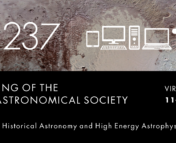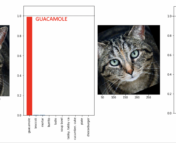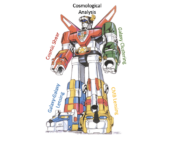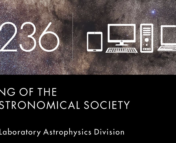In this series of posts, we sit down with a few of the keynote speakers of the 237th AAS meeting to learn more about them and their research. You can see a full schedule of their talks here, and read our other interviews here!
Brian + the Machine (Learning)
You might have noticed a rise in the number of astronomy publications—and a corresponding increase in the number of Astrobites!—about machine learning (ML). Over the last decade, ML has become a powerful statistical tool, but as ML expert Dr. Brian Nord knows, it’s not a one-size-fits-all solution. “You can apply machine learning to everything, which is not always the best idea,” Nord says, then smiles. “Which took me a few years to learn.”
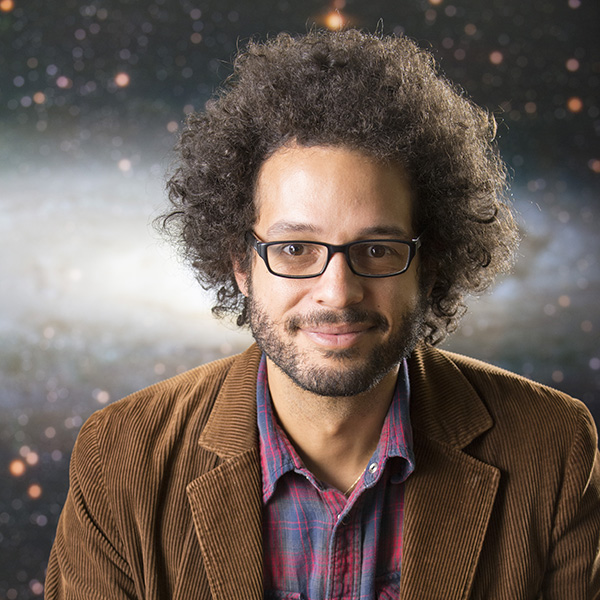
So what exactly is the role of ML in astronomy? Nord (who has an impressive list of positions: Scientist at Fermilab, CASE Scientist in the Department of Astronomy and Astrophysics and Senior Member of the Kavli Institute of Cosmological Physics at the University of Chicago, and co-founder of the Deep Skies Lab) plans to discuss this exact question in his plenary talk at #AAS237.
“I’d like to talk about the winding road that machine learning has gone through in astronomy,” Nord says. “I think there’s a lot to learn from the path that was taken as a community, and I want to review that and give a sense of where I think we’ll get the most use out of deep learning.” But Nord’s plenary talk will also go one step further. “The other part will be: what’s the role of the scientist who develops deep learning tools […] in the societal implications of the work we’re doing? If I’m trying to improve an algorithm to make it better at recognizing galaxies, how much am I also contributing to algorithms that are good at facial recognition—which we know is biased against people of color? What role do I play as a scientist? What role do I play as a Black scientist?”
Machine learning, three ways
Nord’s own research in machine learning has taken three primary directions: using ML to analyze data, using ML to design experiments, and studying ML itself.
1. Using machine learning to answer scientific questions by analyzing data
Nord, a cosmologist by training, has often used ML to classify objects like gravitational lenses, which are useful for cosmology (see, for example, this recent Astrobite).
“One of the big things that you might want to do with machine learning is detect rare objects. Strong gravitational lenses are a rare type of object in the way they look on the sky,” Nord says. “The field [of gravitational lens studies], for a better part of the last 30 or 40 years, has been mostly using human visual inspection to detect whether something is a strong lens or not. As you start thinking about [Rubin Observatory] and JWST and other big telescopes and surveys, that’s not really gonna cut it anymore.”
2. Using ML to design experiments
Machine learning is useful not just for analyzing data, but also for getting data—specifically, improving experiment design. The Dark Energy Spectroscopic Instrument (DESI) is a massive spectrograph that is just beginning to obtain spectra for tens of millions of galaxies. As DESI was being built in the 2010s, Nord says, “some colleagues and I started asking […] ‘Why aren’t we simulating the entire instrument at once?’” Nord and colleagues built SPectrOscopic KEn Simulation (SPOKES), a tool that simulates the instrument from end to end and “lets you see the scope of our knowledge —‘ken’—about the instrument.” Now, Nord is thinking even bigger. “I’m starting to ask questions like: Should we be fully operating surveys manually?” Nord says. Perhaps ML can be used with tools like SPOKES to automate experiment design.
3. Understanding ML as a statistical tool
Finally, and perhaps most importantly, Nord tries to understand ML itself, and the problems inherent with ML approaches. “Deep learning is not great at giving error estimates that are immediately interpretable to a physicist. It doesn’t come out in terms of, you know, statistical uncertainty and systematic uncertainty,” Nord says. He recently worked with a postdoc to test different ML methods to simulate a simple pendulum system. “We showed that if you just take these [algorithms] off the shelf and think you’re going to get an answer out of it… you’re not. So we’re trying to develop new tools to do this uncertainty quantification.”
The way forward
So what is the path moving forward for ML as a statistical tool for astronomy? “People should be asking what their ultimate goal is, and working backwards from there,” Nord explains. “So if your goal is to classify and find things, then the main thing one would need to worry about is bias from the training sample to the test sample. That’s not a solved problem, but there are tools to mitigate that […]. But if we want to go beyond that, into actually getting a measurement, then we need to be careful that we’re not treating deep learning like it’s anything magic. It’s a tool that we need to really deeply understand.”
We also need to think about how ML can be used as a tool in power structures, both in science and in society at large. Nord points out this 2016 ProPublica article that discusses how in several states in the US, judges can use closed-source ML algorithms to help decide how long to send someone to jail—and how these algorithms are biased against people of color, especially Black people.
“When we see a new technology come about that is even half as disruptive as artificial intelligence, I think one of the questions that we should be asking is: How will this be used to concentrate power? And, alongside that, how can it be used to equilibrate power dynamics?” Nord says. “The further along we get in the development of artificial intelligence as a fundamental tool—in science and in other places in society—without asking those questions, I think the landscape of our opportunity for using it as a chance to equilibrate power changes. […] I think there’s still time to get the word out, but it feels like we’re losing time. I don’t want to lose this opportunity.”
“You can pick one thing, and then like it and do it”
How did Nord end up studying ML and cosmology? “I started in physics in college, and at the end of college I was going to do string theory,” Nord says. But as he began his PhD at the University of Michigan, he found that “string theory started to sit farther and farther away from the questions I wanted to ask about the universe.” So he went into cosmology, which he felt “provided a more direct conduit to philosophical questions about existence and my place in the universe and my childhood dreams of space travel,” and he eventually decided to switch into the subfield of strong lensing after his PhD. That’s when he got into ML. “I faced this problem that made me sad, to have to hand-scan tens of thousands of images, [and] I started thinking about deep learning.”
Nord is grateful for his experiences switching fields. “I’m glad that I tested different kinds of science. […] You don’t need to like all of physics. You can pick one thing, and then like it and do it.” For students who are trying to pick a field to work in, Nord suggests “thinking carefully about the sociology of the scientific community that [you’re] in. […] If the project’s great but the advisor is terrible, you’re gonna have to live with that for years to come.”
Nord also encourages current students to remember that at the end of the day, working in physics and astronomy is just a job. “You can love it, but it doesn’t have to be the thing that owns our lives. I think there’s this idea in academia that if you’re not a full part of it in every single way, if you don’t give up yourself completely, then you’re not worthy. And I think that’s terrible,” he says. “Even as a PI, that’s still out there. […] The systems that we work in still dictate a lot of the power.”
As a result, people who choose to work to change these systems should be careful when setting their expectations. “The institution of the academy has significant flaws that allow people to be disenfranchised and oppressed,” Nord says. “Systemic racism exists in academia, full stop, it’s still there. Systemic misogyny exists in academia, full stop, it’s still there.” And even though “equity, diversity, and inclusion” efforts sometimes claim to work against these flaws, they “are not equivalent to justice. Those three terms in tandem form this conceptual framework that are often used to, either in purpose or by accident, detract from actual justice efforts.”
Finally, Nord reminds students that while “the goal of science is to learn about nature in an objective and unbiased way,” scientists are not ourselves objective. “And when we try to convince anyone that we are, we just look more and more foolish. This subjectivity that we have, it exists because we’re human and we’re social creatures, so we need to accept that and figure out ways to create a just community for ourselves.”
Interested in machine learning in astronomy and society? Check out Dr. Nord’s plenary talk at 3:10PM ET on Monday, January 11 at #AAS237!

Astrobite edited by: Gloria Fonseca Alvarez
Featured image credit: American Astronomical Society

